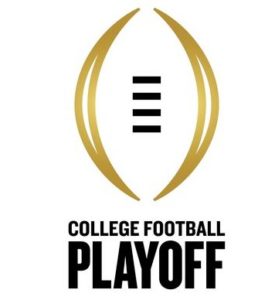With all the focus on college football playoffs, it is easy to get caught up in the hype surrounding schools with major football programs. They certainly do their best to draw attention. But is it for the right reasons? For parents and high school students that are focused on the quality of education – and the benefits that brings after graduation – these football-oriented schools may not be the best choice.
The Benefits and The Costs of College Football
 Football can be exciting, and it certainly gives students something to come together for. Team spirit runs high in football schools. This is probably especially true right now for the schools that made it to the semifinals of the first ever college football playoffs, namely, the Rose Bowl – University of Oregon and Florida State University, and the Sugar Bowl – University of Alabama and Ohio State University. Students at these schools are proud of their teams, and exhibit considerable team spirit. This level of student bonding is powerful, and is something students that graduate from these schools remember fondly for a lifetime.
Football can be exciting, and it certainly gives students something to come together for. Team spirit runs high in football schools. This is probably especially true right now for the schools that made it to the semifinals of the first ever college football playoffs, namely, the Rose Bowl – University of Oregon and Florida State University, and the Sugar Bowl – University of Alabama and Ohio State University. Students at these schools are proud of their teams, and exhibit considerable team spirit. This level of student bonding is powerful, and is something students that graduate from these schools remember fondly for a lifetime.
But the student bonding that the focus on football allows does come at a cost – one demonstrated by statistics. Consider the following:
- University of Oregon – 44% of students graduate in 4 years. Student to faculty ratio of 22:1.
- Florida State University – 53% of students graduate in 4 years. Student to faculty ratio of 26:1.
- University of Alabama – 41% of students graduate in 4 years. Student to faculty ratio of 20:1.
- Ohio State University – 53% of students graduate in 4 years. Student to faculty ratio of 19:1.
These low graduation rates and large student to faculty ratios are pronounced in football schools, especially when compared to other liberal arts colleges with an academic focus. Compare the statistics above to numbers taken from some small colleges that don’t have Division I football:
- College of Wooster (OH) – 70% of students graduate in 4 years. Student to faculty ratio of 11:1.
- Lewis and Clark (OR) – 69% of students graduate in 4 years. Student to faculty ratio of 12:1.
- Rollins College (FL) – 62% of students graduate in 4 years. Student to faculty ratio of 10:1.
- Spring Hill College (AL) – 55% of students graduate in 4 years. Student to faculty ratio of 13:1
Schools With an Academic Focus
Academic schools are there for one reason – to teach. This requires well-managed classes, ones where students are able to interact on a one-on-one level with their instructors. These schools have noticeably smaller class sizes and a much more favorable student to faculty ratio, often nearly half the size of the football schools.These liberal arts schools also tend to spend more money on their students, often quite a bit more. And while money is certainly no substitute for quality instruction, it certainly helps in a number of ways. It allows the school to hire better teachers, and it allows for more personalized attention for each student.
One of the most startling figures listed above is the graduation rate of these different schools. The rate is significantly higher in academic-focused schools. While these schools may cost more initially than their larger, football-focused alternatives, they also tend to graduate students in a reasonable time frame. This can save money overall, and get the students into the workforce faster. Although there are numerous variables that can affect a college graduate’s mid-career salary, those that graduate from a liberal arts college also tend to earn better salaries by mid-career.
However, this superiority in delivering a well-rounded education does not necessarily need to take away from the college sports experience. At Division III colleges and universities across the country, students play on varsity teams without the incentive of an athletic scholarship. This means they have no reason to put their participation on the field above that in the classroom at any point in their education. A much larger percentage of students has the opportunity to participate in varsity sports at DIII schools, many of which are liberal arts colleges. Rather than centering their time at college around athletics, the DIII student athletes learn to balance their sports with classes and other extracurricular activities, creating a balanced educational experience.
Deciding on the Purpose of Higher Education
Ultimately, the question of which school to attend should be based on the goals of the student. If the high school student has a promising football career ahead of him, a football-oriented school may be ideal. But for any student that is academically focused, the decision to attend an academic-focused school is likely the better option.
